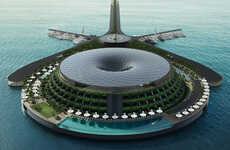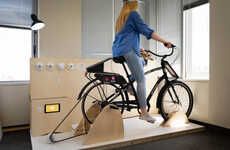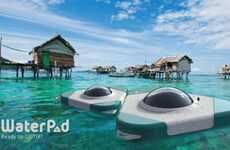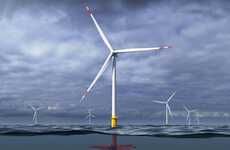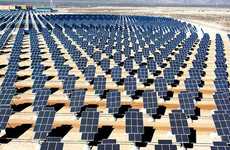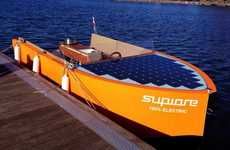
The FloES System Can Supply Electricity to Flooded Communities
Amelia Roblin — March 14, 2013 — Eco
References: energymeet.org & industrialdesignserved
When an area has been inundated, electricity is one of the first things to go. Even when the water level starts to lower, it can be days before people get their power back. A brilliant temporary solution is the FloES Floating Energy Station that harnesses the potent rays of the sun and converts them for use by the most essential technological devices.
The team behind the design of FloES comprises architects Masato Ashida, Alvaro Conti and Takuya Onishi, plus professor Kmonsin Chathurattaphol and students from INDA/Chulalongkorn University. Together they've created an efficient hub with four Kyocera solar panels that can supply up to 2450Wh per day. This is enough for the MEET ENERGY FloES to power five laptops for five hours, 10 LED lights for five hours and charge 10 mobiles phones.
The team behind the design of FloES comprises architects Masato Ashida, Alvaro Conti and Takuya Onishi, plus professor Kmonsin Chathurattaphol and students from INDA/Chulalongkorn University. Together they've created an efficient hub with four Kyocera solar panels that can supply up to 2450Wh per day. This is enough for the MEET ENERGY FloES to power five laptops for five hours, 10 LED lights for five hours and charge 10 mobiles phones.
Trend Themes
1. Renewable Energy Solutions - The development of buoyant energy generators like FloES presents a disruptive innovation opportunity in the renewable energy sector.
2. Disaster Relief Technology - The FloES Floating Energy Station showcases the potential for innovative technology to provide essential services in disaster-stricken areas.
3. Off-grid Power Solutions - FloES demonstrates a disruptive innovation opportunity for off-grid power solutions, enabling access to electricity in remote or temporary locations.
Industry Implications
1. Renewable Energy - The renewable energy industry can leverage buoyant energy generators to expand their offerings and provide sustainable power solutions in various scenarios.
2. Disaster Relief - The use of floating energy stations in disaster relief efforts presents an innovative approach to addressing immediate power needs in affected communities.
3. Technology - The technology industry can explore the integration of buoyant energy generators to develop new products and services for remote or challenging environments.
3.8
Score
Popularity
Activity
Freshness


